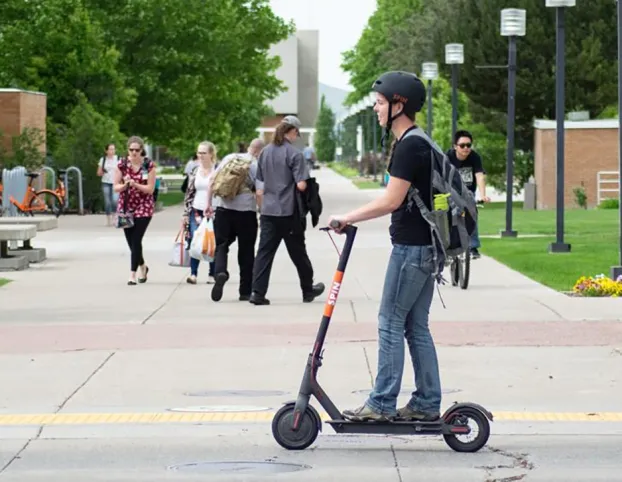With the school year underway and foot traffic picking up across Canby’s Logging Trail Road, city officials are increasingly focused on a challenge that isn’t going away anytime soon—the rise of e-bikes and e-scooters. Members of Canby’s Bike and Pedestrian Committee say the city needs to get ahead of the issue, not just with enforcement, but also with education and clear guidelines.
Concerns From the Bike and Pedestrian Committee
At the Sept. 17 Canby City Council meeting, committee member Michelle Bayley spoke directly to councilors about the lack of information available to residents.
“I went to our city’s website and there’s nothing,” Bayley said. “It’s like Canby doesn’t have an opinion on e-bikes and e-scooters.”
Also Read
Bayley noted she had been asked to draft short educational posts for the committee’s Facebook page but found herself with little to work from. By comparison, she found that nearby West Linn offers a robust set of resources on its website about rules and safety for riders.
“I know they are not going to go away, there are going to be more,” she told the council. “As a citizen of Canby, it would be good to know, if I decide to buy an e-bike or e-scooter, what I can or cannot do. They are sharing the paths and roads with walkers and other bicyclists.”
City’s Response
Mayor Brian Hodson acknowledged that the conversation about e-bikes and e-scooters has been circulating for some time, particularly regarding their use on the Logging Trail. He suggested that the committee develop draft materials similar to West Linn’s guidelines for consideration at a future meeting.
Committee staff liaison Emma Porricolo confirmed that concerns have been raised about speeding cyclists along the Logging Road trail. “We’re hoping we can encourage safer practices by educating and reminding folks of e-bike laws and suggested trail etiquette,” she wrote in a recent note.
Safety and Etiquette on Shared Trails
Oregon State Parks already provides a framework for trail etiquette, which could serve as a starting point for Canby. Some of the key recommendations include:
-
Yielding responsibly: Always yield to pedestrians, horses, and slower users.
-
Announcing when passing: Use clear signals like “On your left” before overtaking others.
-
Riding at a safe speed: Maintain control, especially around corners and in crowded areas.
-
Slowing near children and pets: Extra caution is necessary around more unpredictable trail users.
-
Staying on designated trails: Riders should avoid going off-trail.
-
Allowing extra braking distance: Because e-bikes are heavier and often faster, riders should increase their following distance to give themselves more time to stop.
Committee members believe sharing these reminders locally would help improve safety for all who use Canby’s trails.
A Growing Market
The push for rules and education reflects a larger trend. E-bikes and e-scooters are no longer niche products—they’re part of a growing national market. Sales rose from $28 million in 2024 to more than $30 million in 2025, and forecasts suggest the figure could surpass $39 million by 2029.
That kind of growth means communities like Canby will continue to see more wheels on the trails and roads. Without clear rules or public information, confusion and conflicts between users are likely to rise.
Looking Ahead
For now, the Bike and Pedestrian Committee hopes to build a foundation of education and safety outreach, starting with better resources on the city’s website. Bayley and her colleagues stress that getting ahead of the trend will make Canby safer and more enjoyable for walkers, cyclists, and riders alike.
As Mayor Hodson summarized, the next step may be for the committee to propose a draft policy or educational campaign that city leaders can review. Until then, the message is simple: e-bikes and e-scooters are here to stay, and Canby must be ready to adapt.












